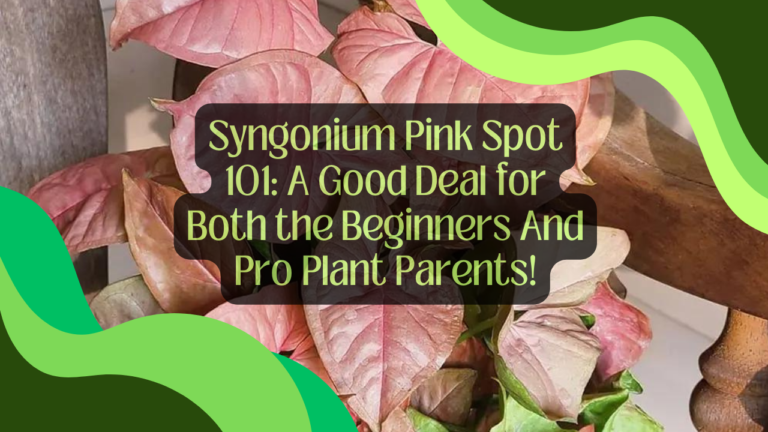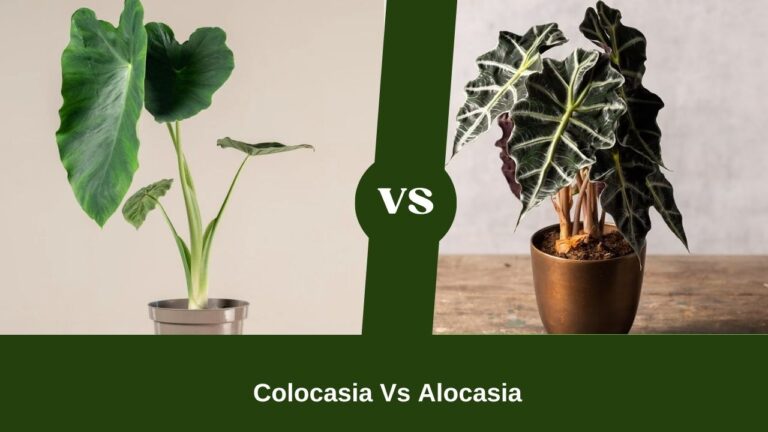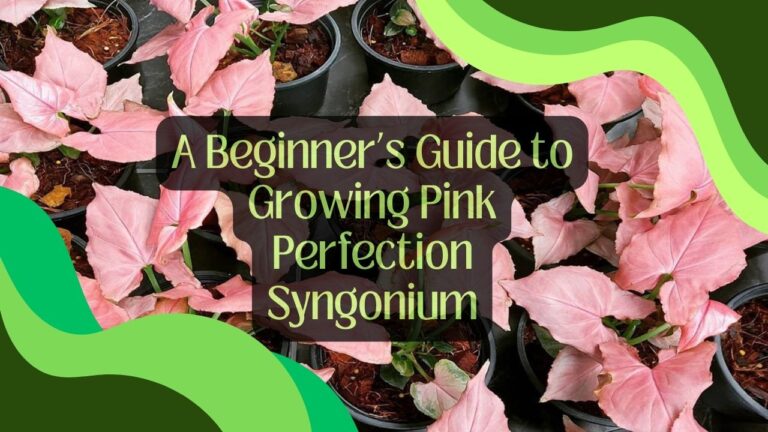5 Expert Tips to Smoothen Alocasia Lauterbachiana Care

The Alocasia Lauterbachiana, is a truly remarkable houseplant. It is also known as the Purple Sword Plant. With its large, purple-tinted leaves that point upright like swords, it makes a dramatic statement in any indoor space.
Though beautiful, the Alocasia Lauterbachiana does require special care to thrive. Filtered lighting, proper watering, and maintaining an ideal temperature are important here. Temperature below 55°F can damage the foliage. Also, fertilization, propagation, and pruning timely will keep the health in steady condition.
Let’s take a look at the article as it is going to guide you through the planet of Alocasia and show how to keep them happy.
Table of Contents
The History of Alocasia Lauterbachiana in A Minute
The stunning Alocasia Lauterbachiana owes its name to the explorer who first discovered it in 1909 – Carl Adolf Georg Lauterbach. While trekking through the dense Papua New Guinea rainforest, Lauterbach came upon an exotic large-leaved aroid with vivid upright purple blades. He gathered specimens to bring back to Europe, where botanists deemed it a new species.
They named the plant Alocasia lauterbachiana in honor of its intrepid finder Lauterbach. For decades, this rare jungle native remained known only to scholars. It entered the wider plant trade in the 1970s as indoor gardening boomed.
How to Ensure Optimal Alocasia Lauterbachiana Growth?
Before talking about the condition, know their environmental requirements. Then, the care traits will be on board. This plant is native to the steamy jungles of Southeast Asia, so it prefers warm, very humid conditions. Let’s know the requirements in depth.
Light Requirements
The Alocasia Lauterbachiana thrives in bright, filtered light. Some direct morning sunlight is tolerated, but harsh afternoon sun will scorch the leaves.
For best results, place this plant near an east or west-facing window where it will get gentle sunlight in the morning and evening. A north-facing window can work as well, but the plant may grow slower without direct sun.
In winter when light levels are lower, you may need to supplement with a grow light. Place a full-spectrum LED plant light above your Alocasia for 12-14 hours per day. This will prevent leggy, weak growth during the darker months.
Watering Your Alocasia
Establishing the right watering routine is key for any houseplant, especially for moisture-loving alocasia. Allow the top few inches of soil to dry out between waterings. Check by inserting your finger into the potting mix to gauge moisture.
When you do water, soak the soil completely until water drains from the bottom of the pot. Never allow the roots to dry out entirely. Consistent moisture is better than periods of very wet and very dry soil.
The plant’s growth rate and local humidity levels will impact how often you need to water. In general, aim to water an Alocasia once every 7-10 days in spring and summer, and every 2-3 weeks in fall and winter. If in doubt, wait an extra day or two. It’s better to underwater than overwater these plants.
Temperature and Humidity
Warm temperatures between 60-85°F are ideal for Alocasia Lauterbachiana. Cooler temperatures below 55°F can damage the foliage, especially if combined with drafts from vents or open windows.
This plant also prefers very high humidity of 60% or above. In dry indoor air, the leaf tips may turn brown and crisp. Set the pot on a pebble tray, mist the leaves daily, or use a humidifier to provide a jungle-like environment.
Soil and Fertilizer
Alocasia Lauterbachiana thrives in rich, well-draining soil. Use a quality potting mix formulated for tropical plants, or make your own mix containing compost and perlite for drainage.
Fertilize monthly in the growing season with a balanced liquid fertilizer diluted by half. Cease fertilizing over winter when growth slows.
As the plant grows, repot every 2-3 years in early spring. Move it to a slightly larger pot, no more than 2 inches wider than the previous container.
Propagation
Propagating Alocasia Lauterbachiana helps you gain new plants for free. This species propagates through the division of the rhizomes and tubers.
Carefully remove the plant from its pot and split large rhizomes apart with a sterilized knife. Ensure each division has plenty of healthy roots attached. Repot in a well-draining soil mix. Keep the new plants humid and shaded as they establish over the next few weeks.
You can also try propagating in water. Cut off a leaf with a few inches of stem, and place it in a jar of room-temperature water. Roots may sprout from the stem in a few weeks, at which point the new plant can be potted up.
Other recommended articles:
- Alocasia Pink Princess Care Tips
- Alocasia Golden Dragon Care Tips
- Alocasia Black Velvet
- How to Do Alocasia Propagation
5 Common Problems In Indoor Alocasia Setup
When given improper care, Alocasia may struggle with a few issues.
- Leaf spotting or yellowing – This can occur with too much direct sun, overwatering, or cold drafts. Move the plant to better conditions.
- Drooping leaves – Indicates underwatering. Give the plant a thorough soak and improve watering habits.
- Sparse, slow growth – Caused by too little light or humidity. Increase levels to spur faster growth.
- Leggy appearance – Results from insufficient light. Provide bright, filtered light to help the plant grow compactly.
- Root rot – Usually caused by overwatering or slow-draining soil. Allow soil to dry out more between waterings and use a very well-draining mix.
5 Pro Tips Explained How to Display Alocasia Lauterbachiana
The bold, exotic foliage of Alocasia Lauterbachiana makes it a stunning display plant. When grown in optimal conditions, those huge purple-tinged leaves make a dramatic statement in any indoor space.
Here are some pro tips for showing off your Purple Sword Plant.
- Let it take center stage. Give the Alocasia its own focal point in a room by placing it in a large pot on a plant stand. Allow at least 12-18 inches of clearance around the plant so the leaves have space to unfurl.
- Complement it with other tropicals. Pair your Alocasia with plants like Monstera, Calathea, Philodendron, and Ferns. Vary textures but repeat that lush jungle vibe.
- Play up the purple hues. Use decor accents in complementary shades of eggplant, violet, wine red, and magenta. Purple artwork, pillows, and rugs will echo the dramatic colors of this plant.
- Give it a mossy pole. Add a natural wood or moss pole next to the Alocasia for the leaves to gracefully grow against. This encourages larger, upright leaves that really stand out.
- Light it from above. Install grow lights or pendant lights over the plant on adjustable cords. Spotlight the stunning leaves and show off their colors even at night.
Please remember these are some tips based on personal experiences. For more tips, contact a plant expert, or an enthusiast to have more knowledge.
Outro
The regal Alocasia Lauterbachiana truly stands out among houseplants with its enormous pleated leaves in shades of purple. This jungle native requires special care and conditions to flourish indoors. Provide the light, warmth, and humidity it craves, and your Purple Sword Plant will thrive as an eye-catching showpiece.
Treat this rare tropical specimen well, and it will become the highlight of your plant collection.






